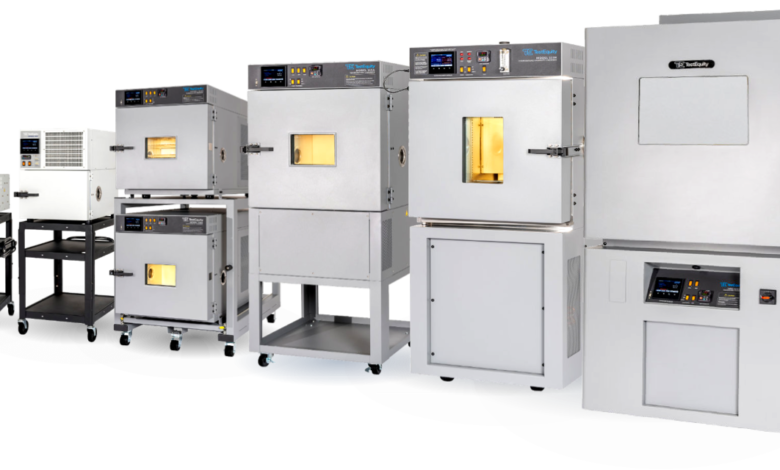What is an Environmental Chamber?

Introduction:
In product development, quality control, and scientific research Environmental Chambers play an important role. These controlled environment enclosures are designed to allow researchers and engineers can control the conditions under which a product, process, or piece of scientific equipment takes place. In this post, I would like to delve into the basics of environmental chambers including types & applications and top 10 benefits.
What Do You Mean By Environmental Chambers?
An environmental chamber is a controlled enclosure created to mimic anything from humidity and temperature to altitude and more. It creates chambers that replicate scorching heat, blinding light, and crushing air pressures to test how products respond under various conditions. These controlled environments allow researchers to expedite testing and collect data on how products perform as they age. An environment chamber, also called a climate chamber or climatic chamber, is a container used to test the effects of specified environmental conditions on biological items, industrial products, materials as well as electronic devices and components. Best Environmental Chamber Manufacturer makes sure to provide an upgraded environmental chamber.
Types Of Environment Chambers:
1. Temperature Chambers:
These are used to check the response of products or materials at different parts like how they behave/respond in extremely hot-cold temperatures. They are also used as thermal shock test specimens and for cycling temperature tests.
2. Types Of Climatic Chambers And Their Usage Thermal Shock Chambers:
These thermal Chambers test rapid temperature changes together to account for a product’s capacity to withstand abrupt change doses of their fabric. Allowing them to test materials in high-stress applications that see large temperature swings.
3. Corrosion Chambers:
To mimic corrosive environments, these chambers conduct tests on how well materials withstand elements such as salt spray or acidic conditions. This is important for fields requiring reliability in rugged settings.
4. Humidity Chambers:
These chambers are used for controlling and experimenting with high to low humidity levels. Used to Determine the Influence of Moisture on Performance and Long-Term Stability for eg Pharmaceuticals, Electronics, etc
5. Chambers to mimic high-altitude:
These chambers recreate a low atmospheric pressure, simulating the life environment at great altitude, and serve as quality control of how products function under this condition. For example, Aerospace and automotive, where altitude (and hence air pressure) affects performance. Learn more by contacting the environmental chamber manufacturer.
Environmental Chambers Applications:-
1. Environment chambers for product testing:
To qualify the products with environmental conditions, e.g., estimates of lifetime temperature and humidity at a point in time. These can range from electronics, and automotive parts to even medical devices.
2. R&D:
Environmental chambers in this case are used to examine the properties of materials, develop new products, and study how they interact with various environmental conditions.
3. QC:
Regular testing in environmental chambers ensures that the products meet quality standards by detecting weaknesses, before mass production.
4. Both forthcoming industry standards:
Certain industries need to comply with certain guidelines. Companies use environment chambers so they can prove compliance and make claims that have real data behind them regarding the performance of their product.
Benefits of using Chambers:
1. Reliability:
Early fault detection in devices/products brings reliability and safety improvements.
2. Faster Testing:
It is also necessary because environmental chambers enable accelerated aging and stress testing which provides an answer on the durability/endurance of a product in many examples faster than the same test could be done under natural conditions.
3. Innovation:
By providing researchers with the ability to expand material science and engineering limits, environmental chambers can also be a stepping stone for research in creating new products.
4. Cost Savings:
Chambers can lead to long-term cost savings by avoiding product failures and warranty claims.
Conclusion:
Environmental chambers are important tools used for testing and certifying the performance of materials under controlled conditions. The results of environmental chambers can be used for valuable insights that will help you innovate, improve product durability, and accelerate progress in your real-world applications based on new development efforts or quality control / scientific research. Environmental chambers make certain that the goods are first-rate standard, have easy performance, and with regulatory necessities.



